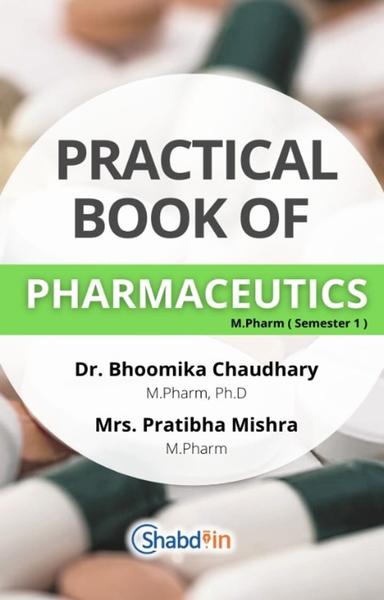AIM: Formulation and evaluation of transdermal patches of given drug (Diclofenac Sodium).
REQUIREMENTS:
Apparatus:- Beaker, Petri plate, StirrerChemicals: -HPMC, Methanol, dibutyl phthalate ,Plasticizer, Diclofenac Sodium.REFERENCES:
Chien YW Transdermal therapeutic system. In: Robinson, JR, Lee VHL.Eds. Controlled Drug Delivery Fundamentals and Applications 2nd Ed. New York: Marcel Dekker, Inc. 1987; 524-552.THEORY:
Transdermal drug delivery system is a therapeutic system designed to transfer drugs through intact skin for systemic treatment. It offers controlled drug release pattern by a simple application to the skin's surface, eliminating the vagaries influencing the gastrointestinal absorption associated with oral administration and providing for more efficient drug utilization. It offers various advantages such as: avoidance the risk and inconvenience of intravenous therapy (non-invasive), avoidance of first pass hepatic metabolism thus increasing bioavailability and efficacy of drugs, no gastrointestinal degradation (pH, enzymatic activity, drug interaction with food, drink and other orally administered drugs) and substitute for oral administration of medication when that route is unsuitable as with vomiting and diarrohea.
Definition:
Transdermal drug delivery system can deliver the drugs through the skin portal to systemic circulation at a predetermined rate and maintain clinically the effective concentrations over a prolonged period of time.
Potential advantages of TDDS:
Avoids chemically hostile GI environment (drug degradation in acidic and basic environments is prevented).No GI distress and the factors like Gastric emptying, intestinal motility, transit time, do not effect this route as in oral route.Avoidance of significant pre systemic metabolism (degradation in GIT or by the liver) and therefore need lower doses.Allows effective use of drugs with short biological half-life.Allow administration of drugs with narrow therapeutic window because drug levels are maintained within the therapeutic window for prolonged periods of time.Reduced inter and intra patient variability.Enhance therapeutic efficacy, reduced fluctuations (rapid blood level spikes-low and high) due to optimization of blood concentration – time profile.Reduction of dosing frequency and enhancement of patient compliance. ¾ Provides controlled plasma levels of very potent drugs.Can provide adequate absorption of certain drugs.Avoids the risk and inconveniences of parenteral therapy (Painless method of drug administration).Drug input can be promptly interrupted simply by removal of the patch when toxicity occurs.Disadvantages of TDDS:
Drugs that require high blood levels cannot be administered – limited only to potent molecules, those requiring a daily dose of 10mg or less.Transdermal administration is not a means to achieve rapid bolus type drug input, rather it is usually designed to offer slow, sustained drug delivery.Adequate solubility of the drug in both lipophilic and aqueous environments, to reach dermal microcirculation and gain access to the systemic circulation.The molecular size of the drug should be reasonable that it should be absorbed percutaneous.Tolerance inducing compounds are not an intelligent choice for this mode of administration unless an appropriate wash out period is programmed in between the dosing regimen.Difficulty of permeation of the drug through human skin –barrier function of the skin.Skin irritation or dermatitis due to excipients and enhancers of drug delivery system used for increasing percutaneous absorption is another major limitation.Factors affecting percutaneous absorption:
Physicochemical factors.Biological factors.Formulation factorsBasic Components of TDDS:
DrugPolymer matrixPenetration enhancersOther ExcipientsRate controlling membraneAdhesiveRelease linerBacking membranePROCEDURE:
Prepare the Transdermal patches by using film former machine.
Dissolve the drug, HPMC, Methanol, after that add plasticizer and polymer mixture together.
Cast the solution on the film and allow for the drying.
FORMULATION TABLE:
S.NO | INGREDIENTS | MASTER FORMULA (Mg) | WORKING FORMULA (Mg) | CATEGORY |
1 | Diclofenac Sodium | 100 | 200 | Anti inflammatory |
2 | (HPMC K100M) | 200 | 400 | Polymer |
3 | dibutyl phthalate | 0.1-0.5ml | 0.2 – 1 ml | Plasticizer |
4 | Methanol | 10ml | 20 ml | Solvent |
5 | HPMC K100M | 1:2 | 1:2 | Binder |
Evaluation Parameter:
1) Physical Appearance-
All the transdermal patches were visually inspected for colour, clarity, flexibility and smoothness.
2) Measurement of Thickness-
Patch thickness was measured by a dial calliper. The average of the five observations was calculated.
3) Weight Uniformity-
The dried patches were weighed on digital balance. The average of five observations of each formulation was calculated.
4) Folding endurance-
The folding endurance is expressed as the number of folds (no. of times the film is folded at the same place) either to break the specimen or to develop visible cracks. This test is important to check the ability of sample to withstand folding. This also gives an indication of brittleness; less folding endurance indicates more brittleness. Folding endurance of the film was determined by repeatedly folding a small strip of film (2cm x 2cm) at the same place till it broke. The number of times, the film could be folded at the same place, without breaking gave the valve of folding endurance.
5) Tensile strength and % Elongation-
The films were taken in rectangular containers using proportionate quantity of the solution calculated on the basis of area. The films were cut into strips of 1cm width and 15cm length. The films were fixed onto the Tensile strength apparatus in such a way that the length of film between the jaws was initially 10 cm. The trials where the breakage occurred at the jaw were invalid and the result was repeated on another strip. The Tensile strength was calculated by the formula, Tensile strength = Break force [1 + change in length] / (width) (breadth) [initial length of the film].The percent elongation was determined by noting the length just before the break point and substituting the formula: [7-8].
% Elongation = [Final length - Initial length] /Initial length * 100
6) In-vitro drug release-
The prepared Diclofenac patch was evaluated for release pattern using rat skin (Wistar albino rat). The membrane and patch were fitted between donor & receptor compartment of self-fabricated modified Franz diffusion cell. The donor compartment was empty & receptor compartment was containing 50 ml of phosphate buffer pH 7.4. The samples were collected at different time intervals for analysing the drug content in the receptor compartment for release pattern of drug and replaced with equal volume of freshly prepared phosphate buffer pH 7.4. The drug content was analysed at 235 nm using U.V double beam spectrophotometer (Table: 3). from the study best formulation was selected for further studies.
Depots Are
Nicotine Patches
Result: The Diclofenac transdarmal patch is formulated and evaluated succesfully.
Remark:
Evaluation PARAMETER:
S.NO | PARAMETER | OBSERVATION |
1 | Bulk density | 0.33 g/cc |
2 | Carr’s index | 13.15 (good) |
3 | Angle of repose | 40.63 degree |
4 | Porosity | 13.33 % |
5 | Tapped density | 0.38 g/cc |
EXPERIMENT NO:3









